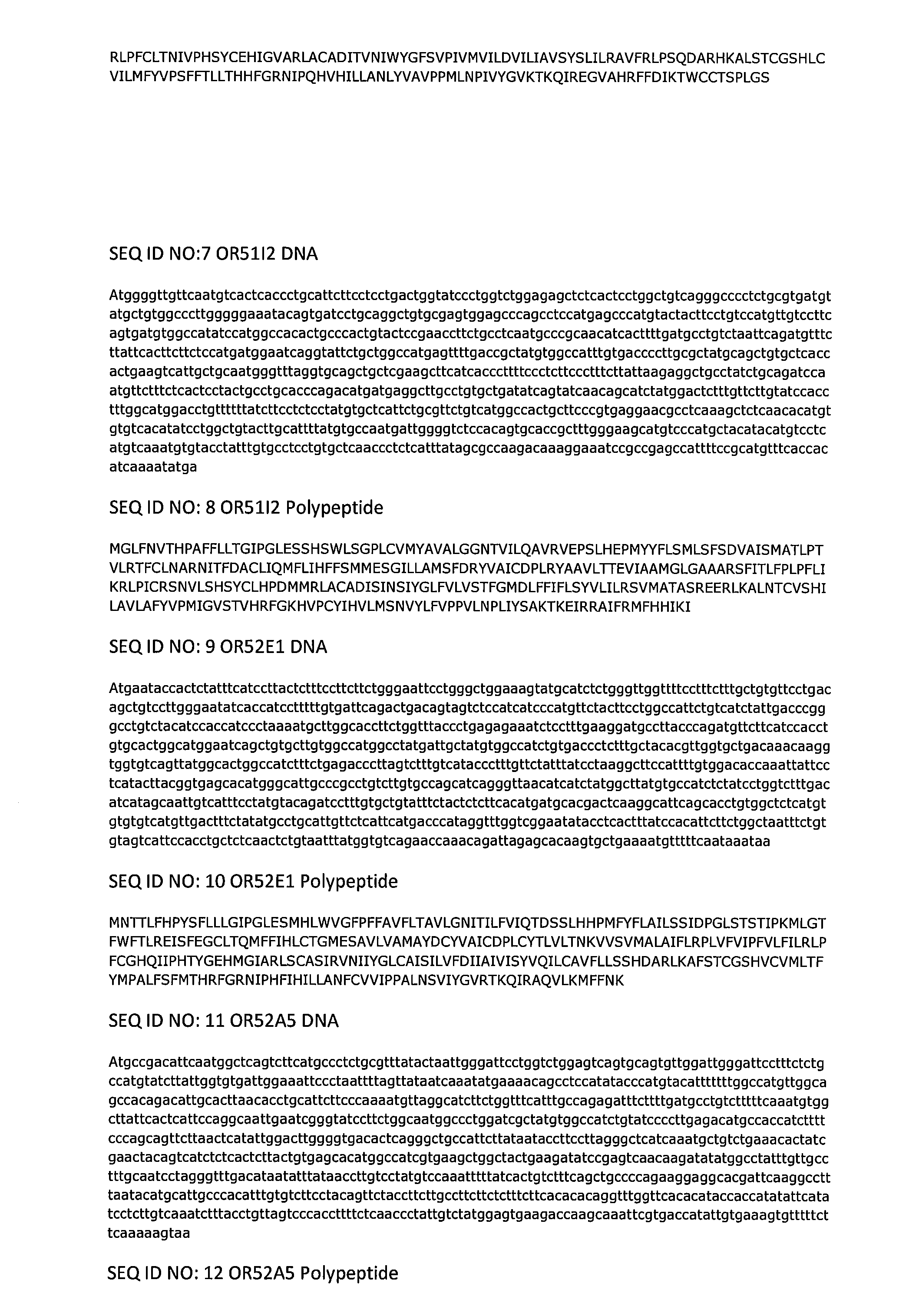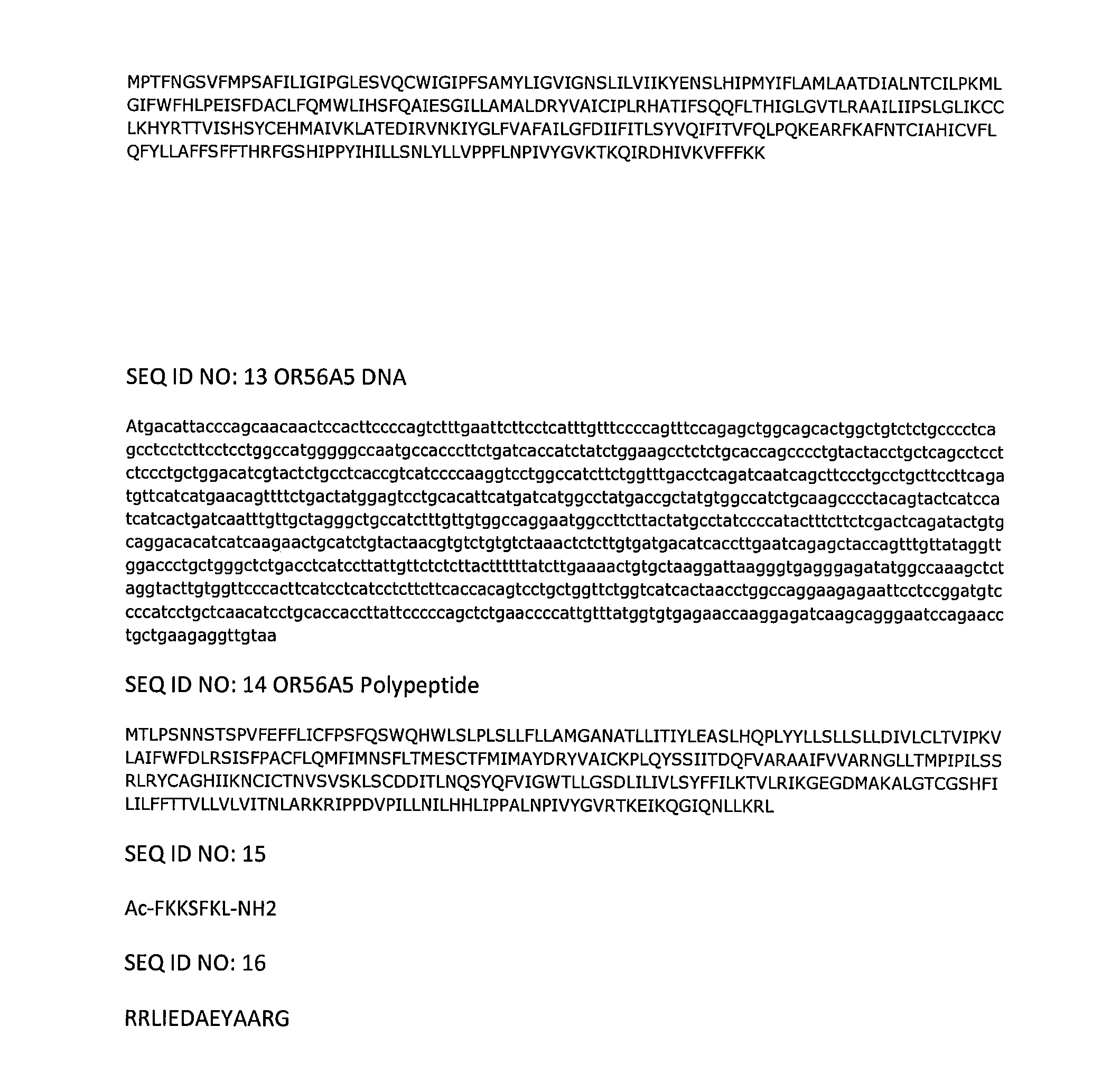Olfactory receptors involved in the perception of sweat carboxylic acids and the use thereof
a technology of sweat carboxylic acid and olfactory receptors, which is applied in the field of characterization of olfactory receptors, can solve the problems of odor release by the human body, particularly sensitive assays to weak responses, and remained largely unsuccessful, and achieve the effect of strengthening its efficacy
- Summary
- Abstract
- Description
- Claims
- Application Information
AI Technical Summary
Benefits of technology
Problems solved by technology
Method used
Image
Examples
example 1
Screening of Odorant Molecule Libraries
[0187]Odorant molecule libraries containing carboxylic acids and other types of molecules were used to identify activators of the seven ORs of the invention. The deorphanisation campaign was performed on the seven olfactory receptors with a series of 148 odorant molecules. Sixteen carboxylic acids present in sweat were included within the 148 tested odorants. Black squares correspond to a response of a receptor to one odorant molecule. The part of the table corresponding to carboxylic acids has been boxed in bold. The seven tested class 1 receptors have all responded specifically and exclusively to carboxylic acids.
[0188]Each molecule was tested at 3 different concentrations (1 mM, 316 μM, 100 μM). The different molecules of the tested libraries were disposed at the same concentration into 96 well plates (1 well / molecule) containing cells expressing the receptor of interest. The activity of the tested molecules was measured using the lucifieras...
example 2
Dose-Response Analysis of Ligand-OR Interaction
[0192]The hits were validated by concentration-response analysis. Semi-logarithmic serial dilutions of hit molecules, from 1 mM to 316 nM, were tested on the responding ORs using the luciferase assay as described above.
[0193]Results are given in Table 2. Full results are given in FIGS. 2 A to G.
[0194]We observed that each of the 7 ORs tested respond to at least one molecule containing a carboxylic function. A careful comparison of these activators with the known carboxylic acids occurring in human sweat revealed that each of the receptors responds to at least one carboxylic acid released in sweat. Some of these acids, such as hexanoic acid, 3-methylhexanoic acid, (E)-3-methyl-2-hexenoic acid, 3-hydroxy-3-methylhexanoic acid, heptanoic acid, octanoic acid, 4-ethyloctanoic acid, (Zeng et al. 1991; J. Chem. Ecolog. Vol. 17 pp 1469-1492; Natsch et al. 2006 Chem. &Biodiv. Vol. 3 pp 1-20) are known to be important promoters of human sweat mal...
PUM
 Login to View More
Login to View More Abstract
Description
Claims
Application Information
 Login to View More
Login to View More - R&D
- Intellectual Property
- Life Sciences
- Materials
- Tech Scout
- Unparalleled Data Quality
- Higher Quality Content
- 60% Fewer Hallucinations
Browse by: Latest US Patents, China's latest patents, Technical Efficacy Thesaurus, Application Domain, Technology Topic, Popular Technical Reports.
© 2025 PatSnap. All rights reserved.Legal|Privacy policy|Modern Slavery Act Transparency Statement|Sitemap|About US| Contact US: help@patsnap.com



